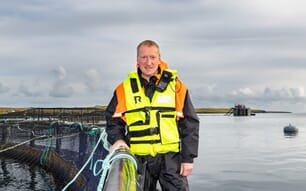Fish health
A. Mitchell gave an historical overview of finfish health in the US from 1797 to 1920, mentioning the health pioneers, their investigations and their (sometimes) unusual treatments. F. Berthe reviewed the management of aquatic animal health from a global perspective. Proper health management practices are of primary importance in preventing, monitoring, controlling and even eradication of infectious diseases. Proper diagnostic tools, communication, reporting and establishment of quarantine methods should lead to emergency planning and actions. Fish providers should preferably be certified. Legislation, enforcement of risk analysis and a list of potentially important pathogens should allow farmers to manage disease and reduce their risks. Examples such as TSV in shrimp and VHS in Canada were highlighted. A. Goodwin dealt with the biology and politics of listed fish pathogens and why some are on the OIE list while others are not.
Immunity
C. Secombes gave a presentation on the cytokine network in fish; some vertebrate cytokines are known in fish while others have still not been found. The question remains as to whether fish have a Th1/Th2 pathway or not? Some part of this pathway may be present but another part not. In addition, some fish-specific cytokines have been identified, not occurring in vertebrates. Eventually, the fish cytokine network might be as complex as in vertebrates. K. Sderhall explained the innate defence system of crustaceans based on the proPO system and a variety of factors produced: penaeidins, crustins, hemocyanins, callinectines. New molecular methods have revealed new categories of genes which seem to be up or down regulated upon infection. The potential use of this knowledge in disease prevention has still to be demonstrated.
L. Brown used genomic and proteomic tools to investigate the pathogenesis of A. salmonicida infection. Information was generated on the importance of superoxide dismutase, pili and flagellar proteins as virulence factors. In addition, the host response was studied in salmon at different times after infection. Combination of the information generated in vitro and in vivo could lead to possible new vaccine antigen candidates. R.Thune studied single-tagged mutagenesis of Edwardsiella ictaluri strains which were tested in an in vitro invasion model in fish cells highlighting the role of bacterial urease.
Emerging diseases
P. Dixon described the occurrence of viral diseases in cyprinids as rhabdoviruses, KHV, CyHV-2, Koi sleepy disease and aqua reoviruses. Placing hosts in new environments might lead to new viral infections. Better diagnosis and access to better diagnostic tools would also lead to a greater awareness amongst farmers. Global warming and changed management practices (such as overcrowding) might also play a part.
B. Nowak reviewed the status of amoebic gill disease which is a serious problem in Tasmania, affecting cultivated salmon but not wild fish. Several other amoebic pathogens were identified in other fish species and sometimes taxonomic relationships could be identified. However, still no effective treatment (except fresh water treatment) is available for amoebic gill disease in salmon.


